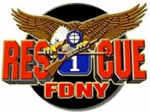Metropolitan New York Library Council

The Metropolitan New York Library Council (METRO) is a non-profit organization that specializes in providing research, programming, and organizational tools for New York City libraries, archives, and museums. The council was founded in 1964 under the Education Law of the State of New York.Member institutions include the Brooklyn Public Library, City University of New York Libraries, Columbia University, Memorial Sloan-Kettering Cancer Center, Mercy College, Museum of Modern Art, New York Botanical Garden, New York Public Library, New York University, Queens Library, Rockefeller University, Westchester Library System, Sotheby's Institute of Art, Scholastic, Inc., and UNICEF.
Excerpt from the Wikipedia article Metropolitan New York Library Council (License: CC BY-SA 3.0, Authors, Images).Metropolitan New York Library Council
West 45th Street, New York Manhattan
Geographical coordinates (GPS) Address Nearby Places Show on map
Geographical coordinates (GPS)
| Latitude | Longitude |
|---|---|
| N 40.762733 ° | E -73.997373 ° |
Address
West 45th Street 600
10036 New York, Manhattan
New York, United States
Open on Google Maps








